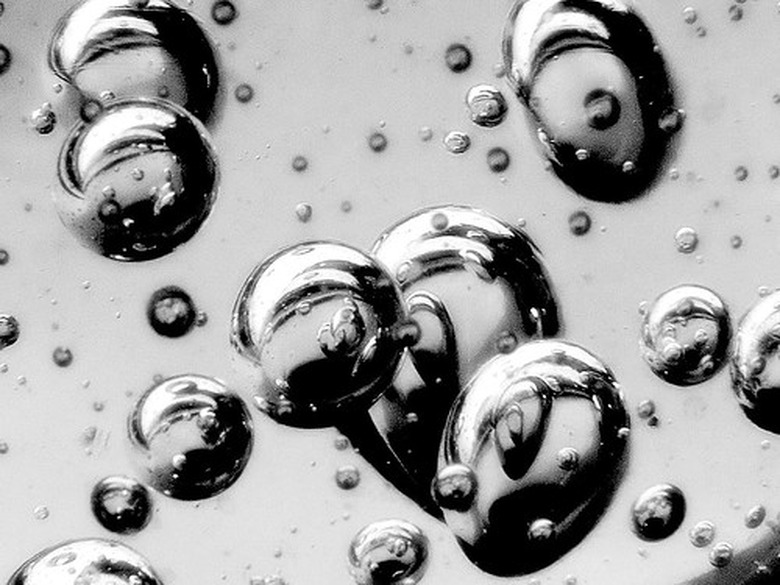What Is The Most Dense Liquid?
Mercury is the densest liquid at standard conditions for temperature and pressure (STP). Also called quicksilver, mercury has been known for more than 3,500 years. It is an important metal in industry, but it is also toxic.
The Densest Liquid
The Densest Liquid
Mercury measures 13.534 grams per cubic centimeter. That's thirteen and a half times more dense than water, which scientists have assigned a density of 1.0.
What Is Density?
What Is Density?
Density is the measurement of an object's mass divided by its volume. Density cannot be measured directly; instead, a scientist takes a weight measurement of an object and then calculates its volume. The volume can be calculated by measuring the amount of water displaced in a container, such as a graduated cylinder, when the object is submerged. Finally, the scientist divides the mass (in grams) by the volume (in cubic centimeters) to obtain the density.
Mercury’s Biography
Mercury's Biography
The only metallic element that is liquid at room temperature, mercury is a very shiny silver metal and is element number 80 on the periodic table. Its symbol is Hg, which stands for its Latin name Hydrargyrum, which means "liquid silver." Mercury has 34 isotopes, 6 of which are stable.
Uses for Mercury
Uses for Mercury
Mercury conducts electricity and is used in a variety of devices, such as:
- thermometers
- barometers
- batteries
- reed switches
The gas form of the element is used in mercury-vapor lamps, and mercury is also used in the production of pesticides and other chemicals.
Mercury and Health
Mercury and Health
Mercury is toxic and should be avoided. During the early nineteenth century, hat makers used mercury in their products. Breathing the fumes eventually caused kidney and brain damage and led to the phrase "mad as a hatter." The term is still used to describe mercury poisoning.
Cite This Article
MLA
Garvin, Karen S.. "What Is The Most Dense Liquid?" sciencing.com, https://www.sciencing.com/dense-liquid-5730281/. 24 April 2017.
APA
Garvin, Karen S.. (2017, April 24). What Is The Most Dense Liquid?. sciencing.com. Retrieved from https://www.sciencing.com/dense-liquid-5730281/
Chicago
Garvin, Karen S.. What Is The Most Dense Liquid? last modified March 24, 2022. https://www.sciencing.com/dense-liquid-5730281/
